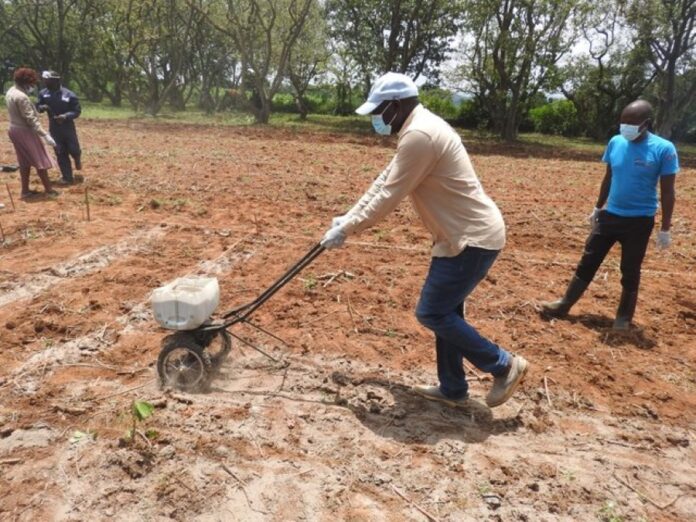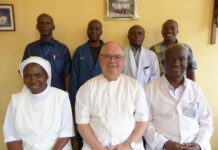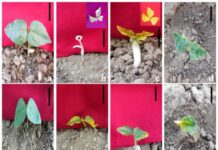A recent study by Spurk et al. (2025) titled “Farmers’ innovativeness and positive affirmation as main drivers of adoption of soil fertility management practices—evidence across sites in Africa,” published in The Journal of Agricultural Education and Extension, reveals that individual factors, such as innovativeness, perception of soil fertility, and correct knowledge, are the strongest drivers of adoption, while socio-demographic and economic factors play a minimal role.
“
Innovativeness, perception of soil fertility, and correct knowledge are the strongest drivers of soil fertility management adoption among smallholder farmers in sub-Saharan Africa. – Spurk et al. 2025
The study explores key factors influencing smallholder farmers’ adoption of soil fertility management (SFM) practices in sub-Saharan Africa (SSA). Declining soil fertility poses a significant challenge to smallholder farming and food security in the region, making the adoption of effective SFM practices crucial. Using data from baseline and endline surveys with 1,870 smallholders across Ghana, Kenya, Mali, and Zambia—complemented by qualitative interviews—the study assesses economic, socio-demographic, individual, institutional, and informational influences on SFM adoption. Findings reveal that individual factors, such as innovativeness, perception of soil fertility, and correct knowledge, are the strongest drivers of adoption, while socio-demographic and economic factors play a minimal role. By highlighting the importance of intrinsic factors in driving agricultural innovation, this research offers valuable insights for promoting sustainable soil fertility practices and enhancing food security in SSA.
How the Study was Conducted
A panel study design was used, collecting data from the same group of 1,870 smallholder farmers across Ghana, Kenya, Mali, and Zambia at multiple points in time. This longitudinal approach allowed researchers to track changes in farming practices and attitudes.
Data was gathered through baseline and endline surveys, covering diverse factors such as economic conditions, socio-demographics, individual characteristics, institutional influences, network dynamics, and information sources. Additionally, qualitative interviews were conducted with selected farmers to gain deeper insights into the personal and contextual factors affecting SFM adoption.
The quantitative analysis involved logistic regression to examine the relationships between these factors and the likelihood of adopting SFM practices.
What the Authors Found
The authors found that individual factors, such as innovativeness, perception about soil fertility, and correct knowledge, play the most significant roles in the adoption of soil fertility management (SFM) practices among smallholder farmers in sub-Saharan Africa (SSA).
Why is this important?
The importance of this study lies in its potential to improve agricultural productivity and food security in sub-Saharan Africa (SSA) by addressing soil fertility issues. Here are a few key reasons why the findings of this study are significant:
Agricultural Sustainability: Soil fertility is a critical factor for sustainable agriculture. By identifying the drivers of adoption for soil fertility management practices, this study provides valuable insights into how to promote practices that can restore and maintain soil health. This can lead to long-term agricultural sustainability in SSA.
Enhanced Food Security: Improving soil fertility directly impacts crop yields and productivity. By encouraging the adoption of effective soil fertility management practices, the study contributes to enhancing food security in a region where many smallholder farmers rely on agriculture for their livelihoods.
Targeted Communication Efforts: The study highlights the importance of targeting innovative farmers and utilizing high-quality messaging through various communication channels. This can lead to more effective dissemination of agricultural knowledge and practices, ensuring that the right information reaches the right people.
Focus on Individual Factors: The study underscores the importance of intrinsic factors, such as innovativeness and correct knowledge, in driving adoption. This shift in focus from socio-demographic and economic factors to individual factors can lead to more personalized and impactful approaches in promoting agricultural innovations.
Informing Policy and Programs: Policymakers, agricultural extension services, and development organizations can use the findings of this study to design and implement programs that effectively promote soil fertility management practices. This can lead to better resource allocation and more successful interventions.
What the Authors Recommended
- The authors recommended that communication efforts should primarily focus on innovative farmers, who are more likely to adopt new practices. Tailoring messages to this group can increase the uptake of soil fertility management (SFM) practices.
- The authors advocate that the information and messages provided to farmers are of high quality. Accurate, clear, and relevant information is crucial for promoting the adoption of SFM practices.
- Utilize various communication channels to reach farmers. This includes traditional methods like radio and extension services, as well as modern tools like mobile phones and social media. By using a diverse range of channels, the information can reach a broader audience.
- Future research should concentrate on in-depth studies of individual factors such as innovativeness and correct knowledge. Understanding these factors better can help in designing more effective interventions.
- In addition, policymakers, agricultural extension services, and development organizations should investigate the information environment of farmers to understand how they access and process information. This knowledge can inform strategies for delivering information more effectively.
In conclusion, this study underscores the pivotal role of individual factors—such as innovativeness, perception of soil fertility, and correct knowledge—in driving the adoption of soil fertility management (SFM) practices among smallholder farmers in sub-Saharan Africa. While socio-demographic and economic factors play a minimal role, targeted communication strategies and high-quality information dissemination can significantly enhance adoption rates. By focusing on innovative farmers and leveraging diverse communication channels, policymakers and agricultural extension services can promote sustainable soil management practices, ultimately improving food security and agricultural resilience in the region. Moving forward, further research on individual adoption drivers can refine intervention strategies and contribute to long-term agricultural sustainability.
















 The African Research (AR) Index is a comprehensive scholarly directory and database focused explicitly on journal publishers that publish and disseminate African research.
The African Research (AR) Index is a comprehensive scholarly directory and database focused explicitly on journal publishers that publish and disseminate African research.

